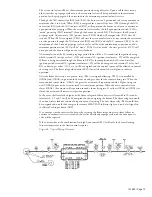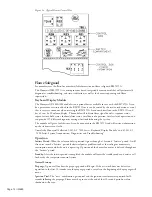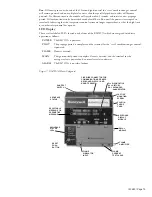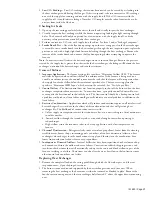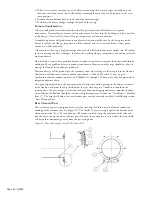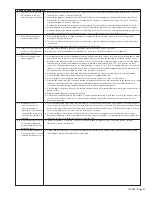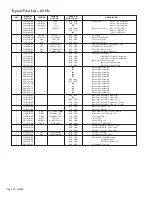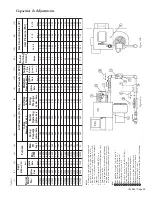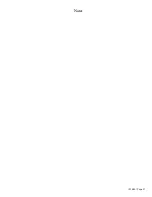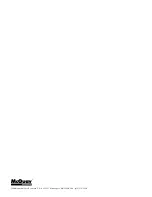
Page 24 / IM 685
3. When it is necessary to remove any air baffles surrounding the heat exchanger, carefully note the
locations and clearances of these baffles before removing them so they can be replaced in the exact
same position.
4. Remove the two bottom bolts at the back of the heat exchanger.
5. Withdraw the heat exchanger through the back of the casing.
Furnace Condensation
A furnace will produce condensation when the flue gas temperature falls below its dew point
temperature. A more efficient furnace will transfer more of its heat into the building, and leave less heat
in the flue gas. This results in a lower flue gas temperature and more condensate.
A modulating burner will produce more condensate than an on-off burner. As the firing rate of the
burner is reduced the flue gas temperature will be reduced, and if it is reduced below its dew point
condensate will be produced.
A furnace that is heating a high percentage of outside air will also produce more condensate. The colder
the air contacting the heat exchanger, the lower the resulting flue gas temperature, and consequently the
more condensate.
Do not think a furnace has a problem because it produces condensate anymore than you would think a
cooling coil has a problem because it produces condensate. However suitable steps should be taken to
manage the flow of the condensate produced.
Most condensate will be produced in the secondary tubes where flue gas will sweep it into the flue box.
Condensate will also come from the combustion chamber. Models 020 and 025 have a piped
combustion chamber condensate drain, and Models 032 through 200 have a rear cleanout port with an
integral condensate drain.
On a properly prepared unit, the condensate should drip from drain openings in the two outer corners
of the flue box, and from the drip shield below the rear cleanout port. Condensate should not be
running down the unit, except at times the wind may blow the dripping condensate mentioned above.
At installation the flue box should be sealed with high temperature silicone (see “Installation – Flue Box,
Item 3”). The drip shield below the rear cleanout port must be correctly installed. See following section:
“Rear Cleanout Port”.
Rear Cleanout Port
The rear cleanout port is equipped with a stainless steel drip shield to direct the flow of condensate
coming out the cleanout port (see Figure 15). The shield (1) must fit snugly against the bottom of the
cleanout port tube (2) at (A) so condensate (B) cannot run back along the underside of the tube and
into the unit or down the side of the rear panel. Instead, the condensate is to run down the drip shield
and drip off its bottom edge, away from the rear casing door.
Figure 15. Rear cleanout port (models 032 thru 200)




